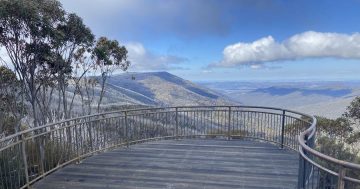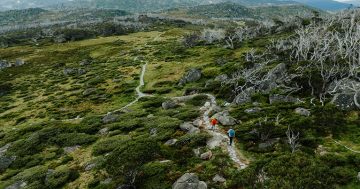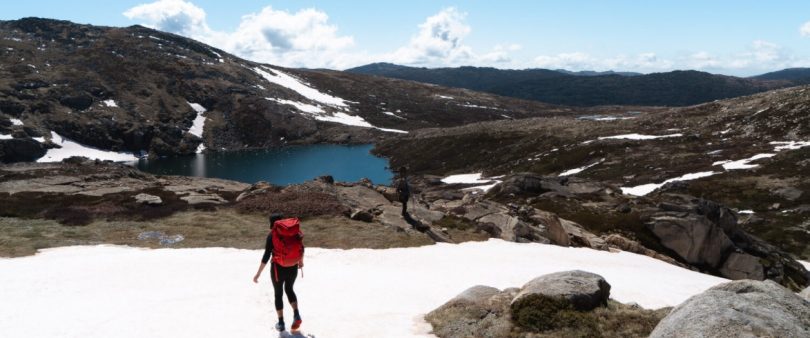
Blue Lake in Kosciuszko National Park is situated along the 22-kilometre Main Range Track loop. Photo: streetandmountain.com
If you’ve walked the path to the peak of Kosciuszko there’s a good chance – if you were feeling fit and adventurous – you may also have turned right towards Blue Lake on the Main Range Walk.
In a landscape that still shows evidence of the Great Ice Age – which ended around 10,000 years ago – the 16-hectare, 28-metre deep freshwater lake sits like a sapphire tucked in the rugged south-east-facing rocky slopes which were created by moving bodies of ice.
And like the rarest of sapphires, this is the largest of just four of these bodies of water – called cirque lakes – on the Australian mainland.
Cirques are formed at the head of a glacier. As this glacier pushes down the slope, it creates a semi-circular basin.
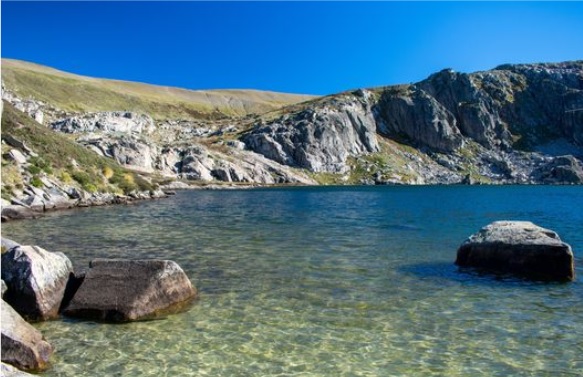
The pristine water of Blue Lake is the freshest in mainland Australia due to its low salt content. Photo: File.
Blue Lake, its neighbouring Lake Cootapatamba – the highest lake in Australia – Albina Lake and Club Lake are all within a granite rock’s throw from Australia’s tallest peak.
Visitors to Blue Lake will now have the opportunity for improved safer viewing with the final touches on an upgrade to the viewing platform.
NSW National Parks and Wildlife Service (NPWS) Alpine Queanbeyan area manager Anthony Evans said the new platform, which opened on World Wetlands Day on February 2, offered fantastic views while helping to protect the fragile shore.
Mr Evans said Blue Lake in Kosciuszko National Park was designated as a Ramsar Wetland of International Significance as it is a rare example of a near-natural alpine wetland and home to several threatened and endangered plant and animal species including the mountain pygmy possum, alpine tree frog and the anemone buttercup.
It is also one of the few lakes in Australia that completely freezes over each year.
“Off-track foot pads lead people to trample through woody heath and sphagnum moss beds which further damages vegetation and changes the flow of water through the landscape,” Mr Evans said.
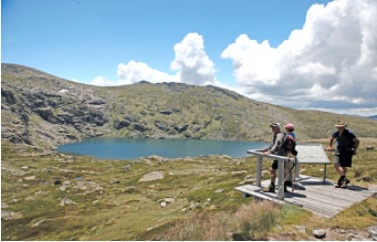
An upgraded platform offers premium views while helping to protect the lake’s fragile shore. Photo: File.
“If allowed to continue, the easily eroded peat soils can be exposed quickly leading to damaging erosion,” he explained.
The alpine region of Kosciuszko National Park attracts about 100,000 visitors a year.
Mr Evans said that intrepid hikers willing to tackle the challenging 22-kilometre Main Range Walk loop from Charlotte’s Pass or Thredbo will enjoy the new viewing platform while walking across the alpine high country.
“The platform provides a safe vantage point to enjoy spectacular views of the lake and the glacial cirque, rather than trampling the fragile vegetation on the lake’s edge,” he said.
The Ramsar site also includes Hedley Tarn, a smaller lake about 400 metres downstream in the outflow creek from Blue Lake.
This walk is snowbound in winter, generally between the June long weekend and October long weekend. You can cross-country ski or snowshoe, but there are no snow poles marking the route.







